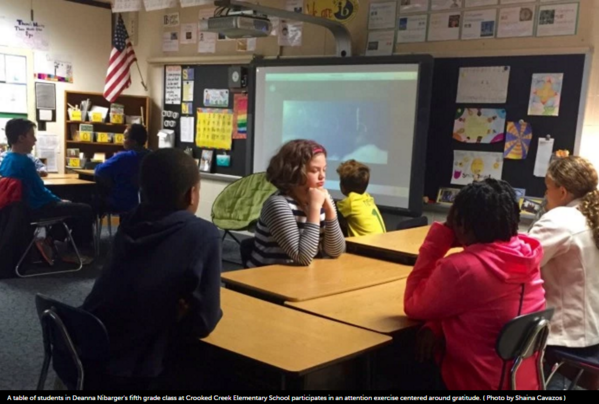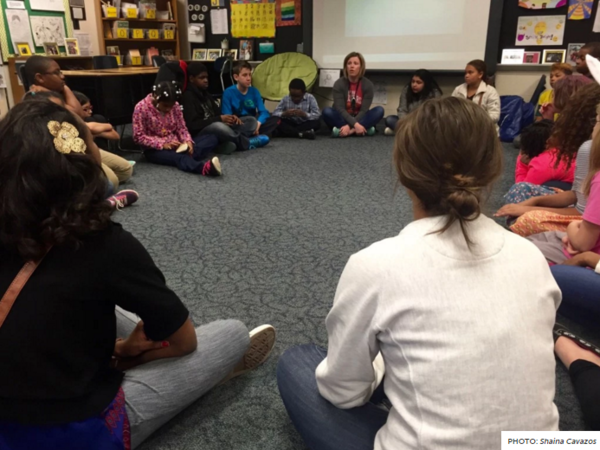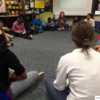When students and teachers learn together about how their brains influence behavior, one expert says, discipline can become less of a confrontation and more of a partnership.
The field of educational neuroscience is at the intersection of cognitive psychology, education and neuroscience, and some of its teachings suggest findings from brain research can be applied to classroom management and discipline techniques. Some trend toward the area of “mindfulness,” such as attempting to sharpen students’ focus through meditation. Other facets of the field that Crooked Creek teachers employ in the classroom include taking short breaks from instruction to ward off boredom and teaching children explicitly about parts of the brain and how they respond to stress.
The idea is to introduce both teachers and students to a basic understanding of how the brain works. If teachers have an idea of what’s going on behind the bad behavior, they can more effectively reach their students because they know it might not just be a child choosing to be defiant or difficult. When students know how parts of their brains work, they might better understand why they might feel frustrated or aggressive. That can help them develop strategies to lower stress so they can work to improve behavior in the future.
“If you were to come to room 18, we talk a lot about emotions being contagious.” Nibarger said. “We do morning meetings, and we talk through conflict. I teach the kids about neuroplasticity; their brains being able to change because of their experiences in life.”
Teaching neuroscience to kids isn’t quite as hard as it sounds — First, they’ll start with model that lets them learn each part of the brain and what it does.
In Nibarger’s class, it’s clear the teaching has taken hold. Her students use words and phrases like “neurons” and “brain trauma” in regular classroom conversation. On the day before spring break, she asked them to tell her what happens when you have “hidden anger.”
For the entire article written by Shaina Cavazos, please click here





Comments (0)